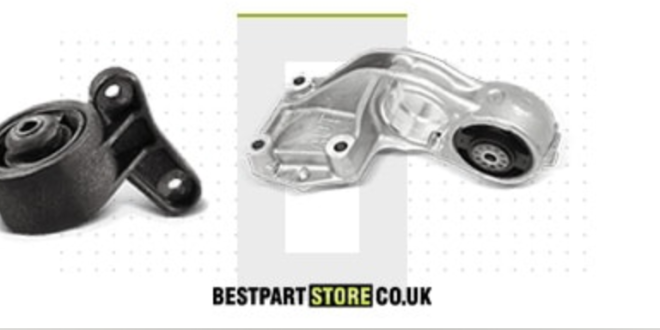When did you last check your engine mounts? Why are they important?
Check out this handy guide for information on how to spot bad engine mounts and tips for replacing them.
How does a car engine mount work?
Car engine mounts attach the engine to the car’s chassis. They’re designed to absorb and dampen the vibrations and movements generated by the engine, isolating them from the rest of the vehicle. Engine mounts provide both support and flexibility, allowing slight movements while maintaining stability.
This helps to reduce noise, vibration, and harshness (NVH) levels, making driving more comfortable for the car’s occupants and preventing damage to the engine and other critical components.
Types of engine mounts
The three main types of motor mounts used today are the following:
- Rubber/elastomer – This is the most common type of mount in the automotive industry, consisting of solid rubber or elastomer supports that are attached to the engine and vehicle chassis by metal brackets.
They come in a variety of shapes and sizes for a number of applications and are cheap to produce. The rubber absorbs vibrations effectively, offering durability and a certain amount of flexibility.
- Hydraulic – These mounts use a hydraulic fluid to dampen vibrations before they reach the chassis. They are more effective at isolating engine vibrations than conventional mounts and can be tuned for specific conditions to improve performance. However, they also come with a premium price tag compared to others. There is also a risk of fluid leaks.
- Electronic – Also known as active engine mounts, these components use a combination of sensors and actuators to actively counteract vibrations. They’re controlled electronically and can adjust their stiffness and damping characteristics based on the load and engine speed.
Image of a car engine mount provided by bestpartstore.co.uk
What do you have to watch out for with a car engine mount?
Although engine mounts require very little maintenance, it’s a good idea to check them every few years as they can start to wear due to high loads and external influences. The average mount lasts 5 to 7 years depending on the operating conditions.
In addition to ageing and stress, there are a number of factors that can cause the components to go bad. For example, if you’re involved in a road accident, the motor and mounts could get damaged under the impact. Other causes include incorrect installation, fluid leaks on and around the mounts, and bad driving habits.
Symptoms of a bad car engine mount:
- Increased vibrations – This is the most common sign of a failing engine mount
- Clunking or banging sounds in engine bay – This can occur when the mounts clash against other components or the engine is not secured properly
- Visible damage to the mounts or engine – Check for visible signs of damage including cracks, corrosion and looseness
- Engine movement – when the engine moves around a lot, it can also cause the axles to move out of alignment, negatively affecting steering
How do you install an engine mount?
For specific instructions on how to access the old damaged engine mount and replace it on your car, we recommend that you check out your vehicle’s repair manual or look for a model-specific online tutorial.
Tips for installing a new car engine mount yourself:
- Make sure to wear protective clothing: it’s a good idea to wear heavy duty gloves and keep your arms covered up when handling engine components. It is also advisable to wear safety glasses due to exposure to engine fluids and other potential risks.
- To support and hold the engine, you should use either a hydraulic jack from the bottom or an engine support bar from the top.
- Experts generally recommend replacing the transmission mount(s) at the same time as the engine mounts, although this is not always necessary.
